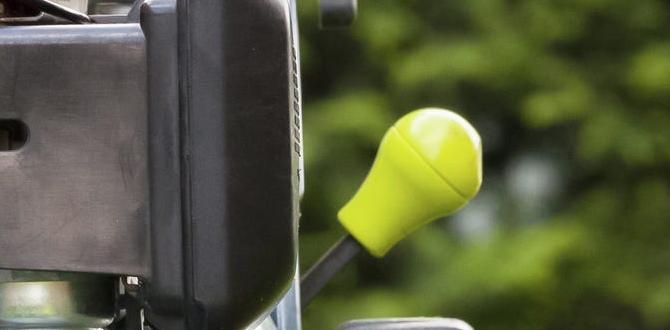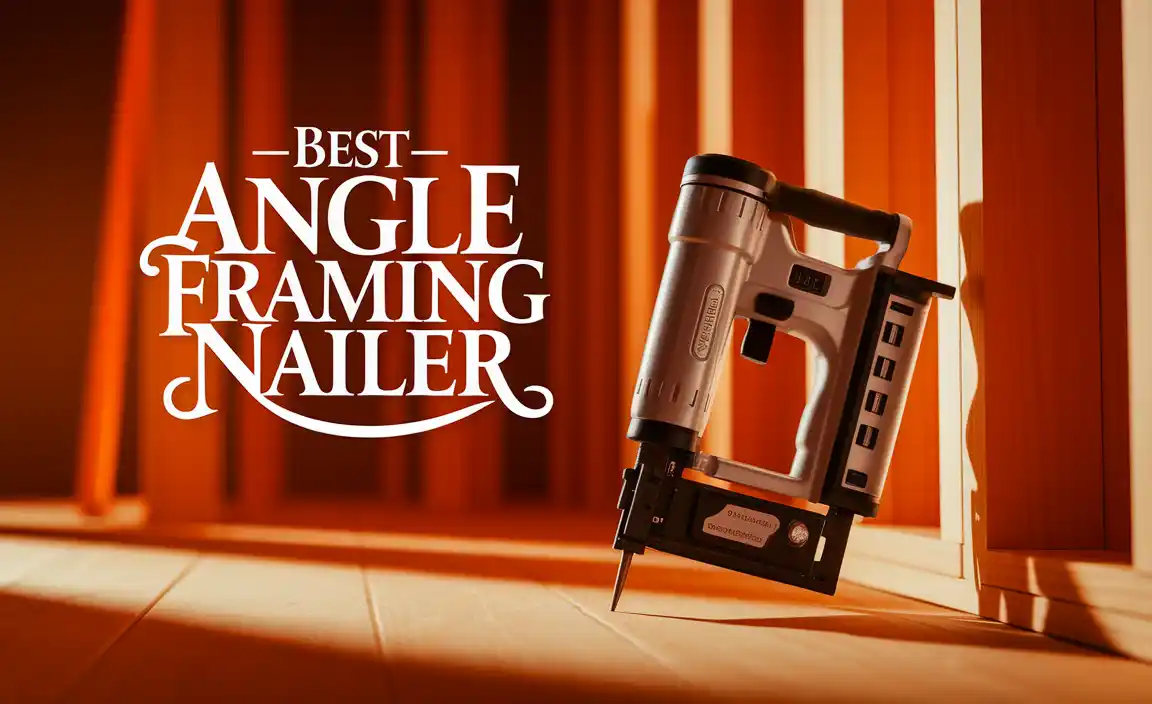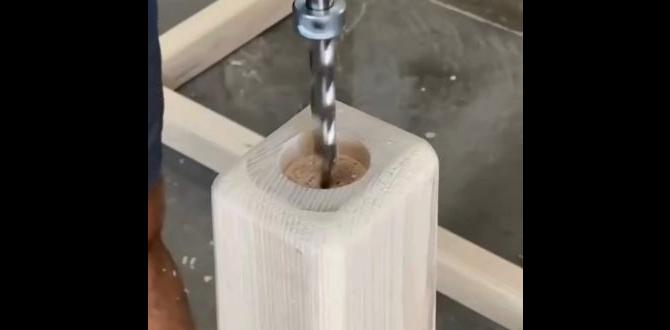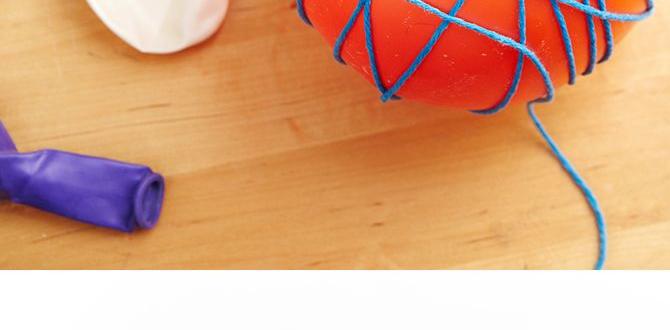Have you ever thought about how a bandsaw works? It can cut through wood like butter! But, did you know that using a bandsaw safely is super important? One small mistake can lead to serious injuries. Imagine sawdust flying everywhere while you try to make the perfect cut. It’s both exciting and a bit scary, right?
Learning how to use a bandsaw safely can make your projects fun and enjoyable. You want to create beautiful things, not accidents. By following some simple safety tips, you can protect yourself while working. Get ready to discover how easy it can be to enjoy this amazing tool without any worries!
Table of Contents
How To Use A Bandsaw Safely: Essential Tips And Techniques Using A Bandsaw Is A Valuable Skill For Woodworkers And Metalworkers Alike, But Safety Should Always Come First. Understanding How To Operate This Powerful Tool Can Prevent Accidents And Injuries. In This Article, We Will Explore The Key Safety Measures And Best Practices To Keep In Mind While Using A Bandsaw Effectively. Understand The Bandsaw Components Before Cutting, Familiarize Yourself With The Main Parts Of The Bandsaw, Including The Blade, Table, And Tensioning Mechanisms. Knowing How These Components Function Will Help You Operate The Saw More Safely. Wear Appropriate Safety Gear Always Wear Personal Protective Equipment (Ppe) When Operating A Bandsaw. This Includes Safety Glasses To Protect Your Eyes From Debris, Ear Protection To Guard Against Noise, And A Dust Mask If You’Re Working With Materials That Produce Fine Particles. Check The Bandsaw Before Use Before Using The Bandsaw, Perform A Thorough Check: 1. **Blade Tension**: Ensure The Blade Is Correctly Tensioned To Avoid Breakage. 2. **Blade Condition**: Inspect The Blade For Any Damages Or Dullness. 3. **Table Alignment**: Check That The Table Is Level And Securely Attached. 4. **Emergency Stop**: Know Where The Emergency Shut-Off Switch Is Located. Maintain A Clean Work Area A Clutter-Free Workspace Reduces The Risk Of Accidents. Keep The Area Around The Bandsaw Clear Of Any Tools, Materials, Or Debris. Ensure The Floor Is Dry To Prevent Slipping. Secure Your Workpiece Properly Use Proper Techniques To Secure Your Material Before Cutting. If Possible, Use A Fence Or Guide To Stabilize Your Workpiece. Clamping Your Workpiece Can Significantly Increase Stability And Safety. Use The Right Cutting Techniques When Operating The Bandsaw: – Feed The Material Into The Blade At A Consistent, Moderate Pace. – Do Not Force The Material; Let The Blade Do The Work. – Always Maintain A Safe Distance From The Blade, Using Push Sticks Or Other Guides When Necessary. Keep Your Hands At A Safe Distance Always Keep Your Hands Beyond The Blade’S Path And Use Push Sticks If The Piece Is Narrow. This Practice Is Vital To Minimize The Risk Of Injury During The Cutting Process. Turn Off The Saw When Finished After You Finish Your Cuts, Always Turn Off The Bandsaw Before Leaving The Area. Let The Blade Come To A Complete Stop And Unplug It If Necessary, Ensuring The Tool Is Completely Safe. Practice Regular Maintenance Regular Maintenance Is Key To Safe Bandsaw Operation. Clean The Saw After Use, Check The Alignment Frequently, And Replace Blades When They Become Dull Or Damaged. Know Emergency Protocols It’S Important To Know The Emergency Protocols In Case Of An Incident. Have A First-Aid Kit Nearby, And Ensure You Know How To Contact Support If Needed. By Following These Guidelines On How To Use A Bandsaw Safely, You Can Enjoy The Benefits Of This Powerful Tool While Minimizing Risks. Always Prioritize Safety And Continuous Learning To Enhance Your Woodworking Or Metalworking Skills.

How to Use a Bandsaw Safely
Using a bandsaw can be exciting, but safety is key. Always wear protective gear, like goggles and gloves. Keep hands away from the blade—an easy mistake that can lead to injury. Adjust the blade guard to fit the material. Did you know that using a push stick can help you maintain distance from the blade? This handy tool keeps your fingers safe while you work. Always disconnect power before changing blades. Remember, safety first lets you enjoy crafting!Essential Safety Gear
List of personal protective equipment (PPE) required. Importance of using appropriate safety gear.Before you dive into using a bandsaw, gear up like a superhero! Personal Protective Equipment (PPE) is your trusty sidekick here. Always wear safety goggles to protect your eyes. Earplugs will keep the noise at bay, so you won’t hear the whine of the saw—like a mosquito buzzing in your ear! Don’t forget gloves for grip; just make sure they aren’t too loose to avoid a surprise handshake with the blade!
| Essential PPE | Why it Matters |
|---|---|
| Safety goggles | Protect your eyes from flying debris. |
| Ear protection | Keep the noise level down and your focus up! |
| Non-loose gloves | Enhance grip but keep fingers safe. |
Using the right safety gear is like putting on armor before facing a dragon. It keeps you safe and ready for action!
Preparing for Use
Steps to inspect the bandsaw before operation. Importance of a clean and organized workspace.Before you start using a bandsaw, do a quick check. First, look for any damage. Check the blade for sharpness and ensure it is tight. Adjust the cutting height if needed. Then, make sure your workspace is clean. A tidy area helps prevent accidents. Remove any clutter around the saw. This helps you focus on your work and stay safe.
- Inspect the bandsaw for damage.
- Check the blade’s sharpness and tension.
- Adjust the cutting height properly.
- Clear your workspace of clutter.
Why is having a clean workspace important?
A clean workspace reduces accidents and helps you concentrate. It’s easier to move around and find tools. Staying organized makes using a bandsaw safer and more fun!
Proper Operation Techniques
Explanation of stance and body positioning. Stepbystep guide to making safe cuts.Before using a bandsaw, your stance matters. Stand with your feet shoulder-width apart. This helps you stay balanced. Keep your knees slightly bent for a comfortable position. Now, let’s make some cuts safely! Follow this step-by-step guide:
| Steps | Details |
|---|---|
| 1. Measure | Make sure to measure your material carefully. |
| 2. Adjust | Set the blade height according to the thickness. |
| 3. Position | Hold the workpiece firmly with both hands. |
| 4. Cut | Slowly push the material into the blade. Always keep your fingers clear! |
Remember, safety first! It’s best to avoid any finger slicing moments. As they say, “Fingers are friends, not tools!”
Common Mistakes and How to Avoid Them
List of frequent errors made by bandsaw users. Preventative measures to enhance safety.Many people make mistakes when using a bandsaw. Here are some common errors:
- Not wearing safety gear.
- Using dull blades.
- Ignoring the owner’s manual.
- Not securing the material properly.
- Rushing through cuts.
To improve safety, take these simple steps:
- Always wear goggles and gloves.
- Check blade sharpness before each use.
- Read the manual for proper operation.
- Clamp your material securely.
- Slow down and focus on the cut.
Staying safe keeps everyone happy while working!
What should I do to prevent injuries while using a bandsaw?
Always wear protective gear like goggles and gloves. Make sure the bandsaw is in good condition. Secure your material before cutting. Focus on your work, and don’t rush during cuts.
Maintenance for Safety
Regular upkeep tasks to ensure safe operation. Signs that indicate the need for professional servicing.To keep your bandsaw safe, regular upkeep is key. Check the blade and wheel alignment often. Here are some tasks you should do:
- Clean the bandsaw after each use.
- Lubricate moving parts as needed.
- Inspect belts and wires for wear.
If you notice strange noises or vibrations, or if the blade isn’t cutting right, seek expert help. Professional servicing is important for safety and performance.
What are the signs that indicate a bandsaw needs professional servicing?
Look for these signs:
- Unusual noises while operating.
- Inconsistent cutting results.
- Visible damage to any parts.
Timely checks on these issues are vital to ensure safe operation!
Emergency Procedures
Actions to take in case of an accident. First aid tips for common bandsaw injuries.If an accident happens, stay calm and act quickly. First, turn off the bandsaw. Next, call for help immediately. If there’s bleeding, apply pressure using a clean cloth. Keep the injured area elevated if possible.
- For small cuts: Clean the wound and cover it with a bandage.
- For severe injuries: Do not remove any objects stuck in the wound.
- For finger injuries: Apply pressure and keep the hand raised.
What should I do if someone gets hurt using a bandsaw?
Immediately call for medical help and provide first aid until help arrives.
Being prepared can save a life. Knowing what to do during an emergency makes you a safer user. Always remember: safety first!
Training and Resources
Suggested training programs for novice users. Recommended books and online resources for further learning.Starting with a bandsaw can feel like a wild ride, but fear not! Some great training programs can help new users. Look for classes offered at local workshops or community colleges. They often have hands-on sessions. For extra knowledge, there are helpful books like “The Complete Manual of Woodworking.” Online, sites like YouTube and woodworking forums are treasure troves of tips. Dive in and learn! Remember, safety first—nobody wants an unexpected haircut!
| Training Programs | Books | Online Resources |
|---|---|---|
| Community Workshops | The Complete Manual of Woodworking | YouTube Tutorials |
| Adult Education Classes | The Woodworker’s Bible | Woodworking Forums |
Conclusion
In conclusion, using a bandsaw safely means knowing its parts, wearing protective gear, and keeping your hands clear. Always focus on your work and don’t rush. We should check the blade and maintain the machine regularly. By following these tips, you can enjoy woodworking safely. For more help, check out resources or ask someone experienced. Happy cutting!FAQs
Certainly! Here Are Five Related Questions On How To Use A Bandsaw Safely:To use a bandsaw safely, always wear goggles to protect your eyes. Keep your hands at least six inches away from the blade. Make sure the blade is sharp and in good shape. Don’t wear loose clothing that could get caught. Finally, always turn off the machine when you’re done.
Sure! Just ask your question, and I’ll be happy to help.
What Are The Key Safety Features To Look For On A Bandsaw Before Operating It?Before you use a bandsaw, check these safety features. First, see if it has a guard to cover the blade. This keeps your hands safe. Next, make sure there is an emergency stop button. It helps you quickly turn off the saw if needed. Finally, look for a good blade tension system. This keeps the blade tight and steady while you work.
How Should I Properly Adjust The Blade Tension And Tracking On A Bandsaw To Ensure Safe Operation?To adjust the blade tension, you first check that the bandsaw is off. Next, tighten or loosen the tension knob until the blade feels tight but not too tight. For tracking, turn the tracking knob to make sure the blade runs straight in the middle of the wheels. Always check the blade’s position after making adjustments. Lastly, remember to wear safety gear while working!
What Personal Protective Equipment (Ppe) Should I Wear While Using A Bandsaw?When using a bandsaw, you should wear safety goggles to protect your eyes. Ear protection, like earplugs or headphones, helps keep your ears safe from loud sounds. You should also wear a dust mask to protect your lungs from sawdust. Finally, wear gloves to keep your hands safe, but make sure they’re snug and not too loose. Always remember to be careful!
What Are The Recommended Techniques For Feeding Material Through The Bandsaw To Prevent Kickback Or Blade Binding?To use a bandsaw safely, you should keep your hands clear of the blade. Always push the wood steadily and smoothly. Don’t force it, or you might get kickback or binding. Keep the wood flat against the table. Also, make sure the blade is sharp and properly adjusted.
How Can I Maintain My Bandsaw To Ensure It Remains Safe And Effective For Use?To keep your bandsaw safe and working well, you should clean it regularly. Make sure to remove sawdust and debris from the machine. Check the blade often for any damage, and replace it if it’s worn out. Always keep the blade properly tensioned, so it cuts straight. Finally, remember to unplug the saw before cleaning or changing the blade!






